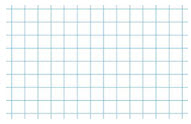Open questions – providing opportunities for success
Antje and David Leigh-Lancaster, Leigh-Lancaster Consulting
Introduction
Successfully answering a question or solving a problem provides a sense of achievement, strengthens confidence and increases openness to tackling other questions or problems. You have likely experienced this yourself at times and noticed it in your students.
Including open questions in your teaching provides an opportunity to enhance feelings of success and achievement for all learners. Through multiple entry points, these questions cater to a broad range of abilities, helping to foster an inclusive learning environment where students can feel valued and capable of contributing.
This article discusses:
- what makes an open question
- examples of how to open-up a closed question
- the benefits of including open questions in lessons.
What makes a question open?
A question is considered open when it can be answered in a variety of ways and has more than a specific correct answer.
Each of the following examples shows a closed question and a corresponding open question.
Example 1
Closed question:
5 + 8 = + 10
Open question:
How many pairs of numbers can you find that make this equation true.
+ 8 = + 10
For this open question, as students are identifying pairs of numbers that make both sides of the equation equal, they are also engaging in thinking about the relationship between the two numbers they are choosing. That is, the number paired with 10 is consistently 2 units less than the number paired with 8 or alternatively, that the number paired with 8 must be 2 greater than the number paired with 10.
Example 2
Closed question:
A rectangle has width 5 cm and length 8 cm.
Draw the rectangle on 1 cm grid graph paper and calculate its perimeter and area.

Open question:
Draw several rectangles where the size of the perimeter is:
- greater than the size of the area
- less than the size of the area
- equal to the size of the area
The format of this question involves students calculating the perimeter and area of several different rectangles (developing fluency) while also thinking about the relationship between the perimeter and area, and under what condition one is greater than, less than or equal to the other (developing mathematical reasoning).
This question format has the additional benefit, that no matter what side lengths a student chooses, they will automatically meet one of the 3 listed conditions. This shifts the focus from ‘am I correct /incorrect’ to ‘what do I need to do differently to satisfy one of the other conditions.
Example 3
Closed question:
Calculate the mean and median for the data set {4, 8, 10, 15, 19}
Open question:
Consider the data set {4, 8, 10, 15, } where can be any positive integer.
For what values of will:
- the mean be less than the median
- the mean equals the median
- the mean be greater than the median
Here, the opening-up of the question shifts the focus from performing two calculations, to performing these calculations several times, while also thinking about the relative sensitivity of each of these measures of centre, and the interplay between them.
Benefits of open questions
Incorporating open questions into lessons:
- decreases the focus on solely getting the correct answer. This change in focus can help students feel more at ease, willing to engage and express their own ideas.
- increases inclusion by having multiple entry points (low floor – high ceiling), thereby accommodating an increased number of learners with varying levels of ability and knowledge.
- naturally embeds the proficiencies. The openness of the question:
- encourages thinking deeply about the mathematics and making connections
- provides opportunities for students to explain their reasoning and articulate their thoughts clearly, as well as listen to and learn from others’ explanations and approaches
- has students exploring a variety of solutions, with the ‘built-in’ practice developing fluency.
- provides teachers with further insights into students’ level of understanding and any misconceptions they may have.
Deciding on whether, and when, to use an open or a closed question will depend on the specific learning objective. If the goal is to assess students' ability to apply a particular process, then a closed question might be the appropriate choice. On the other hand, if the goal is to encourage students to deepen their understanding, make connections and explain their thinking, then it may be more suitable to use an open question.
If you’d like to know more about open tasks:
Maths in Schools: Questioning | Mathematics Hub
This resource provides an overview of questioning in mathematics lessons and includes a video discussing the use of closed and open questions, and a video on transforming from closed questions to open questions.
NRICH: Problem Solving: Opening up Problems (maths.org)
This article discusses how closed and open problems are related and details a specific example for the process of opening-up a closed problem.